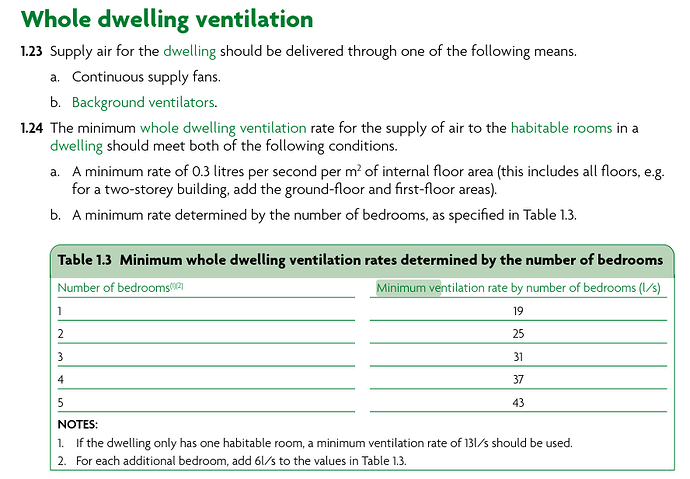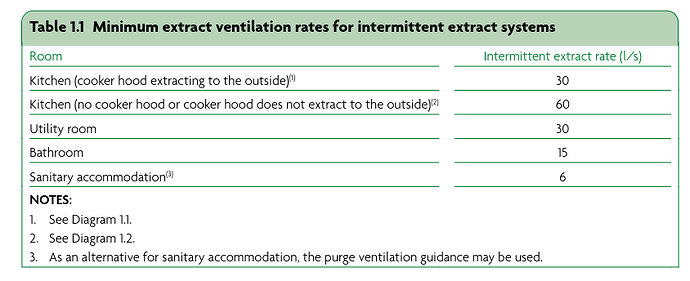Exactly! “Preloaded” with CO2 and then left alone.
Nice!
A house built well enough such that the impact of houseplants can be measured is a great benchmark for build quality. ![]()
curious could you use the far cheaper ENS160 as they are only 1/4 the price off SCD4X or their sensitivity is not high enough
I can’t speak for that specific sensor but generally the sensors calculating an equivalent CO2 value and not measuring it directly are only very loosely correlated to actual CO2 values. Here’s the BME680.eCO2 für the same period as above. From that trace I would think someone broke in every day I was away.
It does come with a few downsides. Especially in winter you really have to take care of humidity in the air if you don’t want mold problems. Around 3 times per day I will open a few windows in the living room fully to completely cycle the air. That’s why I originally installed the CO2 sensors - to have Home Assistant tell me when I should ventilate and when to close the windows again.
Youre right on the sensor cost i suspect. I beg to disagree on the scarce resource question though. Helium has and will continue to be, for the lifetime of our planet, produced by radioactive decay within the earth…alpha particles. Most escape the planet whether we use it or not. The little we capture and use had concentrated in geology that creates natural gas traps from which we extract the helium.
You could argue that the energy we use to separate it is wasted… but not the helium.
Most natural gas reservoirs contain helium but only a few in sufficient concentration. So burning natural gas always releases helium.
What pressure is the 0.1 ACH measured at?
You don’t have MVHR or similar?
It’s a rough estimate based on the CO2 equilibration rates I have, I didn’t account for air pressure there.
No, but we plan on retrofitting decentralized ventilation units in the coming years. It’s a 30 year old house with some peculiarities. Today you wouldn’t build such an airtight house without some form of ventilation system.
okay thank you for the reply . it would seam the CO2 reading from BME 680. is affected by secondary factors. I am guessing house humidity and/or temperature as it peaking and bottoming at the same time of day . with a little math probably one could correct it so one make the line more closer to the output of SCD30. if I was to guess March 30,31 and April 1 were sunny. and March 29th ,April 2 and 3 was cloudy
Excellent thinking, humidity seems to the culprit! On Apr 1st, humidity peaks but not temperature (probably less direct solar gains).
Ah, OK, but what pressure difference do you assume it to be quoted at then? There’s a lot of difference between ACH at 4 Pa or 50 Pa or 100 Pa, for example.
Indeed, here in the UK I think you would need to install trickle ventilators or similar to meet building regs.
There was no pressure applied so whatever the natural pressure difference between indoor and outdoor air is would be what was present. I would assume an essentially zero pressure differential and air exchange due to diffusion/convection through gaps in the vapor barrier.
The house was built in East Berlin a few years after reunification by a Norwegian prefab house company contracted by a german reseller. I don’t think there were any ventilation standards back then and if so noone cared. ![]() I only saw the structural analysis calculations that were done by hand. For now I’m doing pretty well with the regular manual ventilation (“Stoßlüften”, the German’s favourite sport right after soccer
I only saw the structural analysis calculations that were done by hand. For now I’m doing pretty well with the regular manual ventilation (“Stoßlüften”, the German’s favourite sport right after soccer ![]() ) but we’ll get a decentralized ventilation system some day.
) but we’ll get a decentralized ventilation system some day.
thank you for the graphs … I assume H_WZ is humidity from your graph . and peaks of humidity almost maps exactly right over top of the variance . so it looks like it might be a very easy error correction to do. but it also looks like temperature causes a bit variance as it shifts the baseline up/down slightly as the temperatures rise and fall. so will i buy a couple ENS160+AHT21($6) and see what I can do with them. as they have eCO2 plus humidity and temperature so it should provide an all in one device for error correction
" For now I’m doing pretty well with the regular manual ventilation (“Stoßlüften”, the German’s favourite sport right after soccer ![]() ) but we’ll get a decentralized ventilation system some day."
) but we’ll get a decentralized ventilation system some day."
where I live it too cold for this -10c to -40C for the winter avg of -17c I had air exchange but with icing and the drop in air temp - i now use mainly a dehumidifier to control humidity to keep the house @ 50% and small air exchange to improve air quality. as it cheaper energy wise then multiple air exchanges and reheating it to keep the humidity down-- basically exactly how my electric car controls humidity and cabin heating to minimize energy usage during the winter and cooler months.
You should look into the specs of the sensors you want to order to see how they operate in those conditions. Many of those air quality sensors require exposure to clean/baseline CO2 air for self calibration. Even the SCD40 in it’s default self-calibrating mode requires 400 ppm CO2 exposure around once a week (can be switched off and manually calibrated once).
Also wow, what a cold winter!!!
At least that’s far more easily fixed (MEV with exhaust air heat pump; or MVHR) than a house that isn’t airtight. ![]()
That feels like the wrong kind of MVHR might have been applied here?
Cheapest MVHR = counterflow heat exchanger of aluminium/plastic (heat energy recovery only)
Next level = coutnerflow heat exchanger of paper (heat energy and humidity recovery - otherwise humidity too low in winter - if you’re changing the air often enough to keep CO2 down you usually end up with not enough humidity rather than too much humidity, no?)
Both of these will need pre-heat of the intake air to avoid icing of the exhaust air.
e.g.
Next level = rotary heat exchanger
e.g.
Those rotary units don’t need preheating to avoid icing
This is one direction of travel for HVAC I think - all in one units for proper filtration of incoming air; air exchange and humidifiation/dehumidification; heating/cooling and hot water preparation. Not the right price point yet and not enough of them using R290 etc but heading in the right direction!
I guess another way of approaching this question of what should the air change rate be on heat loss calculations is from the perspective of newer regulations around ventilation in buildings and the wider discussion around inadequate ventilation from a health perspective in a lot of buildings.
The minimum whole dwelling ventilation rates in the part F UK building regulations are probably a useful guide as well as being a regulation requirement:
https://assets.publishing.service.gov.uk/media/61deba42d3bf7f054fcc243d/ADF1.pdf
For our 3-bed mid-terrace house 77m2 floor area and 186 m3 building volume:
1. 0.3 litres per second per m2 of internal floor area:
77 m2 x 0.3 L/s x 3600s = 83,160 L/hour
83,160 L/hour / (186 m3 x 1000) = 0.45 ACH
2. 3 bed, 31 L/s = 111,600 L/hour = 0.6 ACH
So it looks like the minimum ventilation rate that I should assume for heat loss calculations in our house is 0.6 ACH which conveniently is the average value that I measured above ![]()
An issue that we do have however is that the ventilation rate drops below this during calm weather and so our ventilation rate will be too low for periods of time - as are the ventilation rates of a very large % of the building stock of course and what these regulations and PAS 2035 standards for retrofit etc are trying to address…
Also of interest:
This extract ventilation is pulling air in to those spaces from the rest of the dwelling and so the overall whole house ventilation rate is still below the minimum levels in table 1.3 (apart from the cooker hood without extract).
these are also below the whole dwelling ventilation rates:
There’s also an interesting piece about ventilation control which allows operation ‘according to the need for ventilation’ which I guess allows for demand controlled ventilation.
Passivhaus ventilation: It’s not a lot of hot air mentions that a ventilation system of a passivhaus must be capable of complying with standard DIN1946 and therefore capable of supplying at least 30m3 per person per hour. In our case that relates to about 0.48 - 0.64 ACH depending on how you class a 10 month old. I guess we would definitely need 0.64 ACH as the kids grow up.
These figures probably give a good floor for the air change rates that should be assumed in a heat loss calculation, Im edging towards the view that for a house like ours a slightly higher value around 0.75 ACH may be a reasonable value to use, it’s a little above minimum but not full storm conditions…
Which then pull air from outside. Intermittent extract can’t infinitely depressurise the house so adds to the background ventilation.
Counter argument:
Those rates are ideal rates. What is the consequence of deviating from these during adverse conditions?
When it hits 20 below we have to turn off our (cheap) MVHR as the heat exchanger freezes up (crossflow type; no preheater on inlet air) and the ducts drip. For a week or two ventilation is sub par as it relies on window opening. So what? It’s bone dry at that point anyway (heating air from -20 to +20 drops the RH like a stone) so you don’t need the same air changes for moisture removal and the moderately elevated CO2 isn’t going to kill you.
Consistently violating these rates in warm damp conditions is going to give you issues for sure. Violating them during cold snaps on a temporary basis?
They should be in litres per person per second too. Not air changes per hour. The house doesn’t give a monkeys about air changes. Only the humans. (assuming you’re not belching nasty chemicals from furnishings into the air)
Thanks @Marko_Cosic as always physics understanding should trump rules of thumb, your right of course!
… and yes I need to move on from air changes per hour as that should just be a result rather than driver of these calculations, agreed




